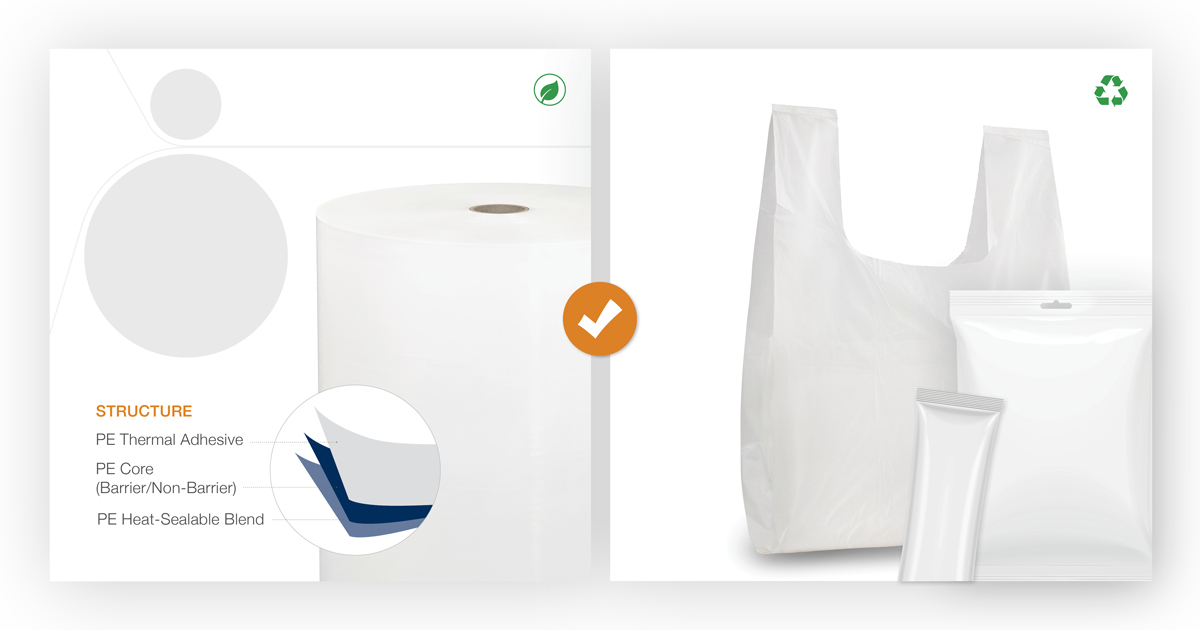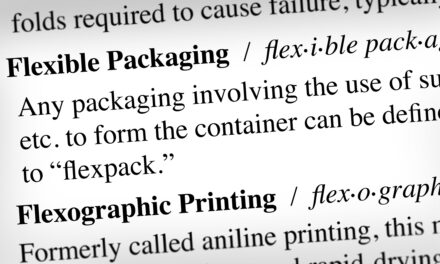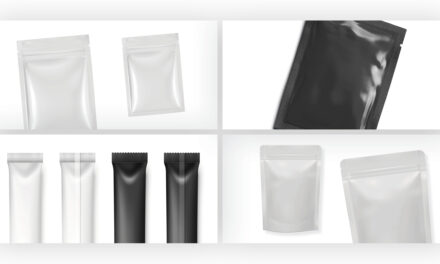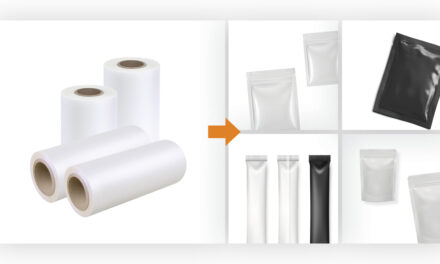HOW THERMAL CONVERTERS CAN MAKE POLYETHYLENE BAGS IN-HOUSE
In the past, thermal converters struggled to compete in the sustainability space because EVA, the adhesive used for most thermal lamination, is widely considered non-recyclable. However, modern innovations in polyethylene (PE) materials are opening the door for thermal converters who want to offer mono-material polyethylene bags compatible with recycling streams. (To learn more about PE bags and why they are the leading solution for eco-conscious flexible packaging, read our post, Eco-Friendly Flex Pack: Can You Recycle Plastic Bags?) Nobelus offers thermal converters an innovative solution that enables them to create recyclable PE bags in-house with the thermal laminating systems they already use: EcoElement™ PE Thermal Sealants.
What Are EcoElement PE Thermal Sealants?
EcoElement PE Thermal Sealants are made entirely of PE and consist of three layers, each of which has a unique polymer blend that allows it to serve a specific function in a polyethylene plastic bag.
- Top Layer: PE Thermal Adhesive
This PE blend is designed to activate within a similar temperature window to EVA, which means it works perfectly with the thermal lamination systems many digital flex pack converters already use. It has the lowest activation temperature of all three layers and makes direct contact with the print web in a polyethylene bag’s structure.
- Middle Layer: PE Core
The PE core is the structural layer that remains firm throughout lamination and shaping/sealing. In the EcoElement PE Thermal Sealants line, this layer can be clear with no barrier properties, but it can also be extruded with EVOH to serve as a gas and moisture barrier and/or titanium dioxide to make it white, eliminating the need to use large amounts of white ink on PE bags.
- Bottom Layer: PE Heat-Sealable Blend
The bottom PE layer melts at a higher temperature window than the top adhesive layer, which means it should remain firm when running through a thermal laminator and then activate at the higher temperatures of shaping and sealing equipment.
How to Make Polyethylene Bags With PE Thermal Sealants
Polyethylene plastic bags are thermally laminated using the same basic process as any other type of flexible packaging. However, because both sides of the PE sealant are heat sensitive, it is crucial that converters web the thermal sealant correctly to avoid damage to the sealant or equipment. For detailed guidance on how to web a Karlville laminator, see our Karlville Webbing & Lamination Guide.
- Reverse print on a PE print web. Nobelus does not currently offer printable PE, but converters can reach out to Charter Next Generation to source a PE print web that fits their needs.
- Load EcoElement PE Thermal Sealant so the heat-sealable PE lies against the chrome roller.
- Run the thermal laminator at the appropriate settings to laminate the thermal sealant to the print web.
The finished structure is an all-PE web ready to be formed, filled, and sealed into a recyclable polyethylene bag.
Can Other Films Be Used With PE Thermal Sealants?
Although the introduction of other materials, such as OPP or PET, will make the bags non-recyclable, PE thermal sealants can still function as a thermal sealant for a variety of print web types. Thermal converters who need a compatible sealant product but do not need recyclable polyethylene bags can combine EcoElement PE Thermal Sealants with a wide range of specialty effects from the Nobelus line, including soft-touch, sandpaper, and burnish-proof finishes.
INTERESTED IN MAKING PE BAGS IN-HOUSE?
We offer sample rolls of all our EcoElement PE Thermal Sealants so you can decide if they are right for your business. If you still have more questions about recyclability or how these products work, don’t hesitate to reach out. Our flexible packaging experts are always available for a consultation to make sure you understand our solutions thoroughly. We are excited to help your business introduce recyclable polyethylene bags into your product line!





